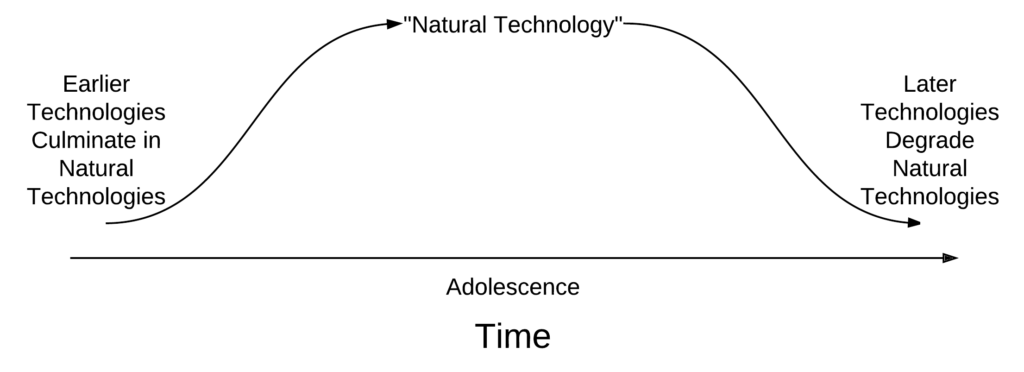Technology has been a part of human existence since our species first evolved. Anthropologist Timothy Taylor (2010) approached a tautology when he suggested that “the intelligence that makes us inventive was enabled by inventions: the baby sling, the stone blade, and the cooking hearth” (194), but he continued “these are not the same as inanimate, natural things. They are artificial and form the nonbiological aspect of the artificial ape” (194).
It is obvious, however, that technologies are not universally valued. We have our preferences, and these seem to be common among our age cohort. This effect can be seen in many technologies, but perhaps the most familiar is in our musical tastes. This can be explained by the concept of Natural Technology.

All technologies are built upon previous technologies; even disruptive technologies leverage existing tools to accomplish new goals. Looking back, one can trace the evolution of (in my area of interest) information technologies to see how advances in hardware, software, and uses improved efficiency and effectiveness, and disrupted, information and interaction. Looking forward, we can expect that technology will continue to evolve.
Humans are born into this progression of technologies, and they become adults at a time when certain technologies are dominating. These become one’s Natural Technology and determine what he or she expects all people to value. When one looks back, all advances led to the Natural Technology, and as one looks forward new technologies are perceived to be degrading cognition.
Consider math and the technologies we use to perform calculations. Most students learned used the technology illustrated above to find the sum of large numbers. When I was a math teacher (a position I last held about 15 years ago), I had the conversation about “the role of calculators” with many different individuals. Most adults at the time insisted that students learn the same math skills they had and that to do otherwise was depriving the students of essential skills.
Since then, calculators have become far more sophisticated. They graph, analyze data sets, and otherwise complete in moments what took one many minutes (or longer) to compute using the algorithms I was taught. For those who do math frequently, a calculator is always at their side. For those who do not, there are many strategies they employ for doing math. While talking about this recently with colleagues at a conference, we all agreed the most common strategy we use when we need to calculate an answer is “estimate until we can get to a calculator.”
For educators, especially, it seems well that we understand Natural Technology and adopt new technologies and adapt our curriculum and instruction to reflect the skills and knowledge necessary to use those technologies for serious purposes. If we insist on teaching the technologies that we grew up using, then we are preparing them for our past, not their futures.
References
Taylor, Timothy. 2010. The Artificial Ape: How Technology Changed the Course of Human Evolution. New York:. Palgrave Macmillan.